If I've said anything repeatedly about Button Shy Games in the past, it's that I never cease to be amazed at the absolute depth of design and strategy they pack into their tiny little wallet games. Like one of those cat food commercials where the Savannah lion leaps across the screen only to become a tiny house cat, these titles, each a mere 18 cards, each pack an unbelievable amount of heart. The bar was set high for me coming in to preview Antinomy, Button Shy's newest Kickstarter, and I have to say they've done it again! But what kind of game is it, and is it for you? Read on and see.
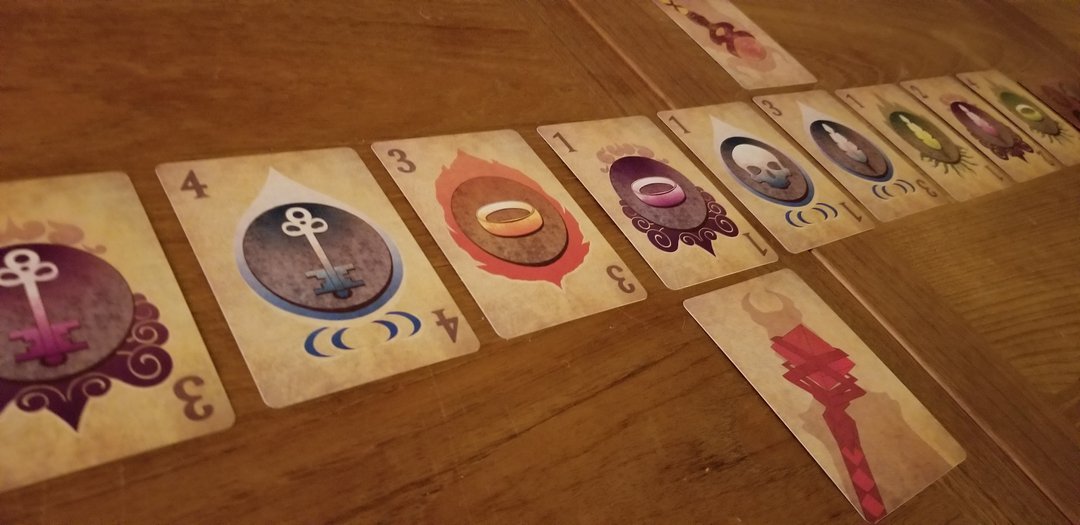
I always get a little excited when themes of wizards, elements, and spells come into the mix.
Simple, Yet Complex
Antinomy, itself meaning a paradox made of two otherwise separately reasonable parts, asks a simple question: what if you, a powerful mage, could travel back and forth through time to collect powerful relics? What would happen if you could bring several of them together in one place? And more importantly, how much power could you gain by crystalizing the ensuing rips in time and space for your own purposes? Thematically, Antinomy pits two competing players in a set collection game along a timeline of cards with just that premise. Be the first to crystalize or steal your way to five paradox crystals and you win.
The game is played very simply. You take one of the three cards in your hand and play it. If played for its number value, you move forward in time. If played for its elemental suit or its symbol, you move backwards to the nearest matching card. Add the card at the end of your move to your hand, put your played card in its place on the timeline, and if you landed on a space with the other player, battle them (with the winner taking a crystal from the loser). Players alternate in this way until one's hand has three matching suits, symbols, or numbers. And in doing so, they create a crystal to add to their victory pile.
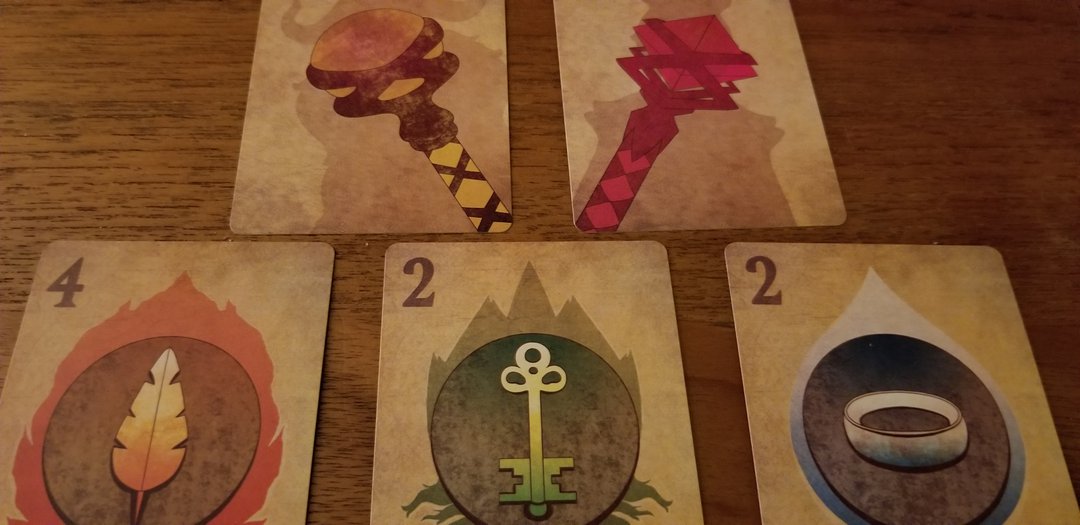
One ring won't rule them all here. You'll need at least three to make a set.
Of course, this being a Button Shy game, it gets much more interesting much more quickly. One card every game is left unused, unbalancing the otherwise perfect math of the game. And printed on the back of that card is a little tracker that moves every time a crystal is created or stolen (or twice if you do both in a turn). This tracker, referred to as “the codex,” invalidates one of the game’s four suits for the purpose of combat power and for forming scoring sets. With each passing move, this game shows more and more depth, and what starts out as a simple game of moving and collecting cards soon turns into a knife fight on a narrow bridge as that bridge tilts like a see-saw.
Obviously Subtle
Antinomy revealed itself in wonderfully subtle layers, almost in defiance of my judgmental thoughts. “It’s 18 cards, and we move back and forth along a straight line collecting them. Sure I like Button Shy, but realistically how good can this be?” Immediately I was struck by the need to plan maybe two or three moves in advance, hopping around until obtaining a card that would yield the necessary move to complete a set; complex, but not as torturous as planning seven moves ahead in a game of chess. This was spiced further by the consideration that my opponent’s move might claim a card I needed, or that if they seemed predictable I might snatch a card they wanted first.
Things kicked up another notch as we began bumping into each other. Two players landing on the same space initiate a clash, comparing the numbers they have in hand (though again “codex” suits counting as zero), and the winner snatches a crystal from the loser Mario Party steal-a-star style. I was pleasantly surprised as this new layer opened up to us, the consideration of trying to collect a set of symbols/numbers/colors while also not appearing weak and vulnerable. We began to space further apart from one another to lessen the likelihood of a surprise attack, venturing briefly into “the neutral zone” only as needed to swipe relics.
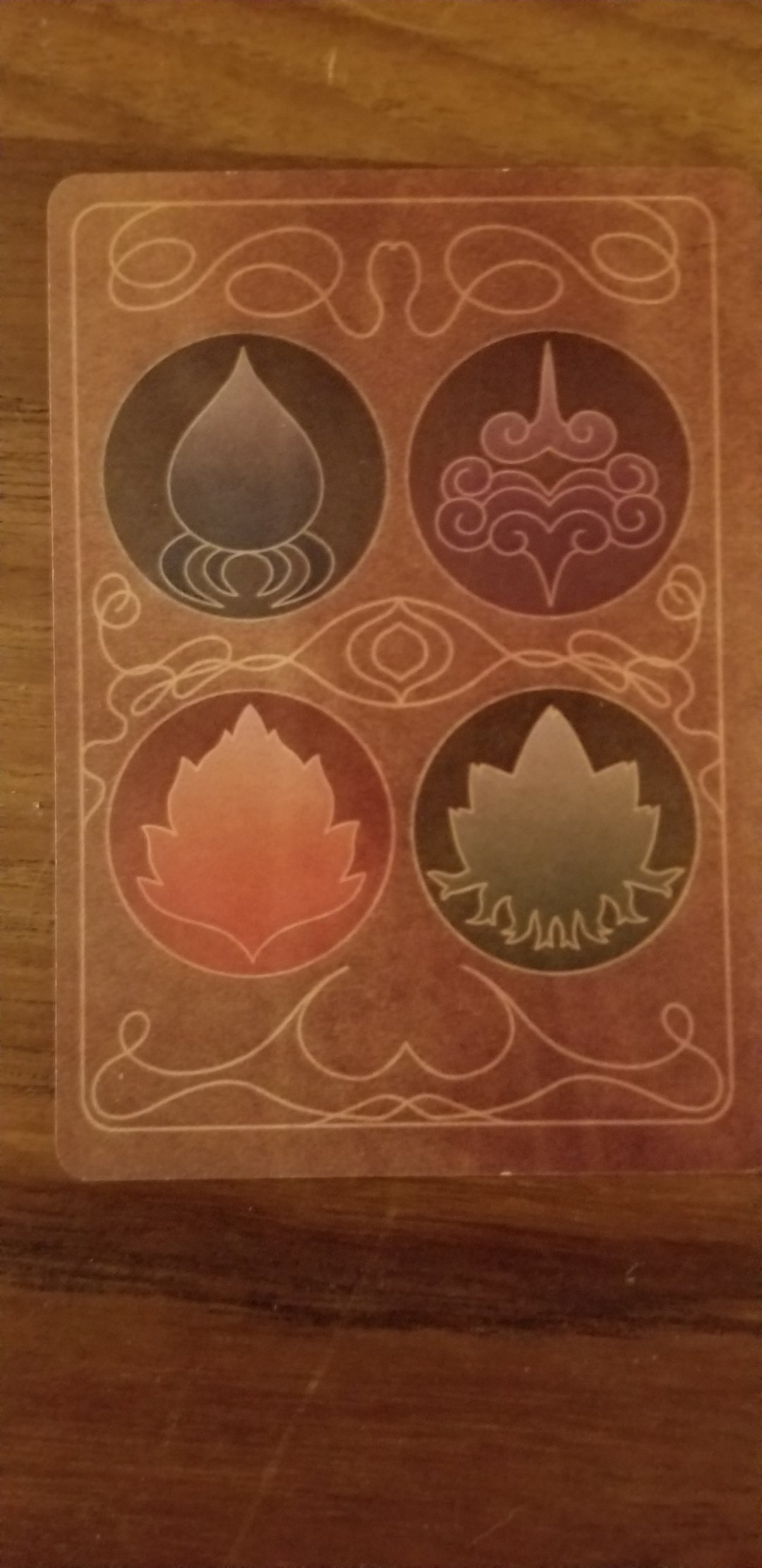
Love the codex, fear the codex.
And finally, when completing sets, not only did we cycle the codex suit but we also dropped our hand on the table, swapping those cards with the three to the right or left of our current space. At first, this mechanic seemed like a simple way to reset one’s hand. But as we played, we realized we could use this offensively as well! Rack up three of one color, score them, and drop them in our opponent’s face just as the codex cycled to make them completely useless. Bombing the field of play became yet another tactic in our arsenal.
By the end of my matches, I was seeing the possibilities swirling around me like a kaleidoscope of the magical energies we were meant to be slinging across the play area. This game wasn’t just a simple contest of set collection. It was a fencing match, a careful dance back and forth in which the underdog might at any time mount a vicious attack and surge back into the lead. Play the field or play your opponent? Cleverly thwart their collection, or ride their victories to make them my own. I’m reminded of the Assassin’s Creed adage: nothing is true, everything is permitted.
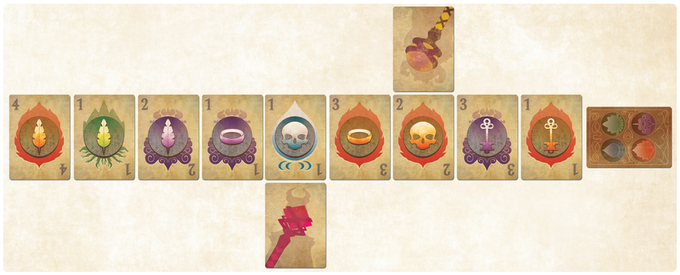
It looks so simple, but it hides an elegance we've come to expect from Button Shy.
As far as I’m concerned, Button Shy and the designers they work with have done it yet again. This is another brilliant little game lovingly wrapped in a functional and vibrant graphic design and a cute little wallet. If you don’t already own any Button Shy games and you’re looking for more good two-player titles, I can’t recommend this one enough. However, if you own several of their games already, is this one still worth the purchase?
In terms of interaction, I’d put Antinomy somewhere along the middle ground of Button Shy’s two player games. It’s not as directly confrontational as something like Liberation or Avignon, but it’s not as “passive” as Circle the Wagons (air quotes here depending on how passive you consider loading up cards on another player who could still just solitaire them into a workable formation). It can definitely be frustrating if you’re the type to play it purely as a strategy game, knocking out perfect set after perfect set only to be gutted by the other player constantly swooping in like a bird of prey. This game is definitely at its best when you’re able to juggle the ebb and flow of combat, or the threat of combat, as you mitigate the codex suit and move about the field of play.
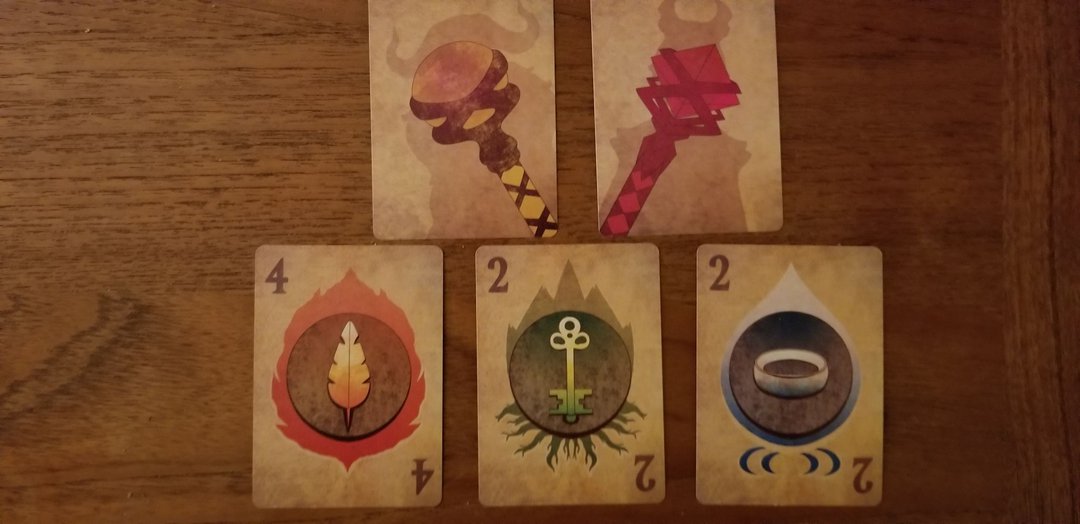
And for that reason, I think this one will be another solid addition into my own collection. I think, in classic Button Shy style, it does exactly what the publisher does best. It distills a game concept down to its crystalized core, the sweet caramel center we call Fun, and wraps a surprising level of complexity into its 18 cards and rules you can learn in 5 minutes. And after all that if you’re still sitting on the fence but can’t shake that feeling of curiousity, I’d encourage you to go for it. After all, at its price point of $10, it really is hard to go wrong. Why not go check it out?